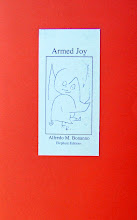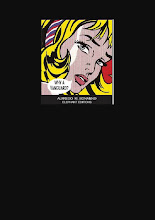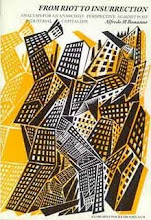One of the main characteristics of the factory today is its failure to achieve complete automation due to a lack in the perspective and, if you like, aspiration to mass production.
The fact that the historic encounter between computerised production and the traditionally fixed model (rigid production lines which came to be partly automated by the use of robots) has not led to complete automation, is not due to technical causes but to problems of an economic nature and the related market conditions. The use of the technologies that have taken the place of manual labour has not reached saturation level. In fact new perspectives are continually opening up in this direction. What has been surpassed, and so become useless in terms of maximal profit, is the strategy of mass production.
The flexibility guaranteed by computer technology, which increased during the growing phase of post-industrial transformation, has led to such profound changes at a certain point in the market structure and demand as to make any perspective of complete automation pointless. Flexibility and streamlined production moved to the realm of the market instead, creating a flourish of new perspectives in demand which was to become diversified to an extent that was quite unthinkable up until even quite recently.
Now, as it is easy to see by reading the accounts of some of big industry’s shareholders, automation is creating costs that are fast becoming uneconomic. Only a perspective of intense social upheaval could force them back along the path of total automation.
For this reason the cost of production is no longer reduced by simply lowering labour costs, as happened over the past twelve years with the almost complete substitution of the worker with computer technology, but also by a more considered management of so-called overproduction. In short, a ruthless analysis of waste in general, primarily from the production point of view. So, once again pressure is being put on the producer in flesh and blood, prompting an about-turn on the claim that computer technology was to alleviate all the suffering and exploitation that has always characterised waged work.
So reduction in waste is becoming the new aim of streamlined production based on flexibility and guaranteed productive potential. And the cost of this reduction in waste is falling entirely on the producer’s shoulders. In fact, mathematical analysis through complex systems—which have been used by the big companies for some time now—can easily solve technical problems such as how to combine raw materials and machinery. But the solution of these problems would still be marginal to production as a whole, were it not now also able to control the rate of the latter.
Old-fashioned taylorism is coming back into fashion, filtered through new psychology and information technology theories, the flexibility of the various components, and the myriad of small producers who support it. Labour in terms of time is therefore the basic unit of the new production: control of the latter, with no waste (but without any stupidly regressive exaggeration) is the indispensable connection between the old productive model and the new one.
The new forms of control are of a pervasive nature, i.e. they tend to penetrate the individual producer’s mind, creating generic psychological conditions that take the place of the external controls that were set through strict production timetables. Self-control and self-prescription of hours and work-pace is gradually taking their place, but this is still ultimately decided upon by the management of the productive units. These decisions might come from democratic discussion at the base, from the single workers within the various production units, in order to root the process of self-determination even more deeply.
In this way there is talk of a kind of ‘adaptive synchronisation’, brought about, not once and for all, but implemented periodically or for single campaigns or production lines. This aims to create a convergence of interests between workers and bosses, not only in the technical sphere of production but also indirectly, in the sphere of the market.
In fact it is precisely the market that is now linking these two tendencies in the new flexible form of production. The old factory saw itself as the centre of the world of production, it was the rigid element from which to start off to create more consumer demands, and satisfy them. That produced an ideology which saw the worker as central, managed by some party leader and aimed at organising the destiny of the proletariat and the whole factory system. The disappearance of this perspective cannot be more obvious today, not so much because of the collapse of actual socialism, but precisely due to the changes we have been talking about. There is no longer any distance between the rigidity of production and the chaotic flexibility and unpredictability of the market. Both aspects have been brought back under the common denominator of variability and streamlining. The way to affect consumerism, by both anticipating and creating it, is to let it go back to the chaos of the market and an acceptable level of flexibility. At the same time, the rigid old world of production is moving into the new streamlined version. The two are meeting in this new dimension, where future economic and social power will be built.
[Original title: La produzione snella, in “Canenero”, no. 5, 25 November 1994. English translation by Jean Weir published in "Let's destroy work, let's destroy economy", Elephant Editions, London.]
skip to main |
skip to sidebar

Some writings of Alfredo Maria Bonanno in English, or almost

Alfredo Bonanno was arrested on October 1st 2009 in Greece, accused of concourse in robbery. With him, anarchist comrade Christos Stratigopoulos.
Here are a few translations and part translations of a small portion of Alfredo's writing. This is a work in progress, many of the translations are as yet incomplete. Open links to find more of Alfredo's work.
Alfredo Bonnano Released
Nov. 22 Alfredo Bonnano was sentenced to 4 years imprisonment (which practically means that with the time served so far and the fact that he is over 70years old HE IS RELEASED
Christos Stratigopoulos (who took responsibility for the action)
was sentenced to 8 years and 9 months with the Greek law will probably be released at the end 2011
BY ANY MEANS NECESSARY
LINKS
click on any of these labels to read text
- "Community" sickness
- 1981 - Editorial
- A Critique of Syndicalist Methods
- A few notes on Sacco and Vanzetti
- A few notes on the revolutionary movement in Italy
- A little man in Singapore
- A million jobs
- A question of class
- Affinity
- After Marx autonomy
- Albania Laboratory of Subversion (Introduction)
- Anarchism and the national liberation struggle
- Anarchists and action
- AND WE WILL ALWAYS BE READY TO STORM THE HEAVENS AGAIN (Against amnesty)
- ANTI-INSTITUTIONAL MOVEMENT
- Are we modern?
- Armed Joy
- ARMED STRUGGLE. SOME REFLECTIONS.
- Autonomous base nuclei
- beyond syndicalism
- Beyond workerism
- But what is the imaginary?
- Class War
- Comiso - Organizational document of the self-managed leagues
- Considerations on illegality
- Dissonances (Introduction)
- Elephant Editions 1986
- Excluded and included
- Farewell to claiming
- Feral Revolution (Introduction)
- FICTITIOUS MOVEMENT AND REAL MOVEMENT
- For an Antiauthoritarian Insurrectionist International - Proposal for a debate
- From riot to insurrection
- From the centre to the periphery
- Good technology
- Guerilla Extraordinary
- Habits and idols
- Hegel
- I know who killed chief superintendent Luigi Calabresi
- Illegality
- Illness and capital
- Informal organisation
- Insurrection
- Internationalism
- Introduction to Sabate
- Introduction to Anarchism and Violence
- Introduction to Bratach Dubh English edition of Malatesta's Fra Contadini
- Introduction to Insurrectionalist Anarchism
- Introduction to Strange Victories
- Introduction to The Conquest of Bread
- Involuntary aspects of voluntary work
- Let's destroy work
- LET'S DESTROY WORK. New introduction
- Let's keep our feet on the ground please
- Lightening Conductors and Stand-ins - more shots of non-news
- Lightning Conductors and Stand-ins
- Lightning Conductors and Stand-ins (cont.)
- Locked up
- Looking forward to self-management
- Loss of language
- More on internationalism
- National Liberation Struggle
- nineteen years on
- No more crises
- Non-news about drugs
- Non-news about racism
- Ode to the Uniform
- On Feminism
- One's life on the line
- Order and chaos
- Otto Ruhle (Introductory Note)
- OUR ROLE IN THE PRESENT CONFLICT
- Palestine mon amour
- Pantagruel anarchist review
- Pinelli
- Prison and Prisoners’ Struggles - Introduction
- Propulsive Utopia
- Quality and the factory
- Restructuring Capital and the new democracy
- Revolution - Violence - Antiauthoritarianism
- REVOLUTIONARY VIOLENCE
- Science and the social revolution
- Self-management
- Severino Di Giovanni in Argentina 1923-1931 by Osvaldo Bayer
- Social banditry
- SOME NOTES -
- Space and Capital
- Stirner
- Stop the City? From information to attack
- Strategy and Methods
- Streamlined production
- The "end" of the crisis
- The aesthetics of anarchism
- The anarchist tension
- The area of autonomy and the anarchist movement in Italy
- The armed wing of science
- The Cruise missile base at Comiso can be prevented
- The ethical bank
- The insurrectional project
- THE LANGUAGE OF TECNICS -
- The logic of insurrection
- The moral split
- THE NECESSARY DESTRUCTION -
- The priority of practice
- The refusal of arms
- The revolutionary project
- The revolutionary struggle
- The significance of an insignificant event
- The struggle for self-managed social space
- The tyranny of weakness
- The whole and the part
- The young in a post industrial society
- Theory and action
- Towards anarchist antimilitarism
- TOWARDS THE GENERALISATION OF ARMED STRUGGLE
- TRANSFORMATION IN THE WORLD OF WORK AND SCHOOL -
- TRUTH -
- Unemployment in Italy - How come everything doesn't explode?
- Untitled
- Violence and non-violence
- What are anarchists
- What can we do with anti-fascism?
- Why a vanguard?
- Why Insurrection
- World domination in a few words











